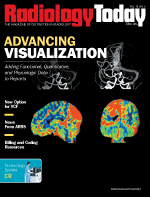 June 2014
June 2014
Make Your Case
By Jim Knaub
Radiology Today
Vol. 15 No. 6 P. 3
Speaking at the annual Radiology Business Management Association Radiology Summit in Charlotte, North Carolina, last month, Thomas Greeson, JD, MBA, a health care attorney at the firm Reed Smith in Falls Church, Virginia, said the top challenge facing radiology groups is aligning their interests with hospital interests while retaining control over how to organize and deliver radiology care. Presuming that most radiology groups want to remain independent—which I do—how does a group align its goals with the hospitals it serves while remaining independent?
Do you think your group can better organize and provide radiology care than hospital administrators? Will you and your colleagues be more productive as independent physicians than as employees? Are you confident that your radiologists have the experience and relationships to better serve referring physicians? If you believe the answer to those questions is yes, define and measure those benefits and clearly explain them to the hospital.
“If you’re doing a good job, tell somebody,” Charles McRae, MBA, CEO of Columbus Radiology, told the audience.
But make sure you truly are doing the job, McRae cautioned. He said Columbus Radiology commissioned a customer satisfaction survey several years ago to assess its service, and the results showed that referring physicians were confident that they were getting quality reads from the group and that they enjoyed working with Columbus radiologists—when they could get a hold of them.
The realization that referring physicians felt they didn’t have access to the group’s radiologists sparked a series of efforts to improve radiologist availability. The centerpiece of those efforts was a new call center staffed by employees of a group that triaged calls and connected callers to the appropriate radiologist to answer their questions. McRae’s story illustrates one example of a practice proactively identifying and aligning with the needs of a hospital it serves. You don’t want to find out there’s a problem by receiving an RFP from your hospital or system.
While it’s true that hospitals have increasing leverage in their relationships with radiology groups, radiologists still bring important qualities to that relationship. Here are two common ones: the ability to organize and deliver imaging services and the understanding that independent physicians tend to be more productive than employed ones. There are more qualities that good groups provide, including some that may be specific to your group’s market. Make sure your group understands (and measures) what it provides hospital clients and communicates that to hospital leadership. These kinds of efforts aren’t favorite activities of many radiologists. More likely, they’re among the least favorite activities, but they’re increasingly important to preserving contracts and maintaining independence.
Enjoy the issue.
jknaub@gvpub.com

